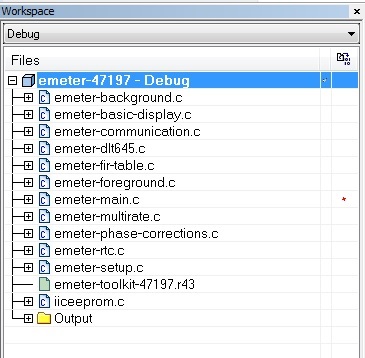Hi,
I wonder what file gets loaded and compiled into Micro-controller on this IAR IDE?
I know it is not possible to compile and load two C programs at the same time. If the main will be, so what is the point to have all of them within workspace?
Can anyone explain this please?
Thank you.


